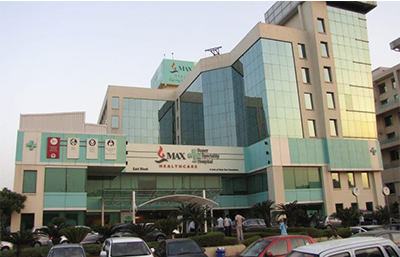Coronary artery bypass grafting (CABG) is a type of surgery that improves blood flow to the heart. Surgeons use CABG to treat people who have severe coronary heart disease (CHD).
Coronary artery bypass surgery, also known as coronary artery bypass graft is a surgical procedure performed to relieve angina and reduce the risk of death from coronary artery disease. Arteries or veins from elsewhere in the patient’s body are grafted to the coronary arteries to bypass atherosclerotic narrowing and improve the blood supply to the coronary circulation supplying the myocardium (heart muscle).
This surgery is usually performed with the heart stopped, necessitating the usage of cardiopulmonary bypass; techniques are available to perform CABG on a beating heart, so-called “off-pump” surgery.
CABG is one treatment for CHD. During CABG, a healthy artery or vein from the body is connected, or grafted, to the blocked coronary artery. The grafted artery or vein bypasses (that is, goes around) the blocked portion of the coronary artery. This creates a new path for oxygen-rich blood to flow to the heart muscle. Surgeons can bypass multiple coronary arteries during one surgery.
Indications
When plaque—a material in the blood—builds up on the walls of arteries, blood flow to the heart muscle is reduced. Since the heart is not receiving adequate blood, the muscle is more likely to tire and fail. This type of damage most often affects the left ventricle, reducing its pumping strength. The left ventricle is the heart’s primary pump.
You will need heart bypass surgery if your coronary arteries become so narrowed or blocked that you run a high risk of a fatal heart attack. This condition is called coronary artery disease. It is also called atherosclerosis. Bypass is performed when the blockage is too severe to be managed with medication or other treatment.
Heart bypass surgery can treat coronary heart disease and lower your risk of a heart attack. However, you will still have a high risk of coronary events. Even after surgery, lifestyle changes will be necessary. You will have to eat a healthy diet and get regular exercise. You may also need to take medication to manage any underlying conditions.
Types Of Cabg:
There are several types of coronary artery bypass grafting (CABG). Your doctor will recommend the best option for you based on your needs.
- Traditional Coronary Artery Bypass Grafting: Traditional CABG is used when at least one major artery needs to be bypassed. During the surgery, the chest bone is opened to access the heart.
Medicines are given to stop the heart; a heart-lung bypass machine keeps blood and oxygen moving throughout the body during surgery. This allows the surgeon to operate on a still heart.
After surgery, blood flow to the heart is restored. Usually, the heart starts beating again on its own. Sometimes mild electric shocks are used to restart the heart.
- Off-Pump Coronary Artery Bypass Grafting: This type of CABG is similar to traditional CABG because the chest bone is opened to access the heart. However, the heart isn’t stopped, and a heart-lung bypass machine isn’t used. Off-pump CABG sometimes is called beating heart bypass grafting.
- Minimally Invasive Direct Coronary Artery Bypass Grafting: This type of surgery differs from traditional CABG because the chest bone isn’t opened to reach the heart. Instead, several small cuts are made on the left side of the chest between the ribs. This type of surgery mainly is used to bypass blood vessels at the front of the heart. Minimally invasive bypass grafting is a fairly new procedure. It isn’t right for everyone, especially if more than one or two coronary arteries need to be bypassed.
Risk Factors
Heart bypass surgery is open-heart surgery. This is major surgery, and there are significant risks. Complications that could arise from heart bypass surgery include:
- Arrhythmia (Irregular Heart Beat, Which Is Rare)
- Bleeding
- Blood Clots
- Chest Pain
- Heart Attack Due To Blood Clots
- Infection Of The Wound
- Kidney Failure
- Low-Grade Fever
- Memory Problems (Which May Fade In Time)
- Stroke
Prior to the surgery, your doctor will do a comprehensive examination. The goal is to reduce your risk of surgical complications. Some medical conditions can complicate surgery. It is important to inform your doctor—or emergency room team—if you have:
- Diabetes
- Emphysema
- Kidney Disease
- Peripheral Artery Disease
Procedure
- Before the Surgery: Prior to surgery, you’ll change into a hospital gown and be given an IV. Through this IV, your team will be able give you medication, fluids, and anesthesia. When the anesthesia begins working, you’ll fall into a deep, painless sleep. When you wake, the surgery will be complete and you’ll be in an intensive care unit. You’ll also be hooked up to a breathing machine. There will be a tube in your mouth. While you’re sleeping, you’ll be wheeled to an operating room. The surgery will take three to six hours. During that time, your doctor may repair two to four coronary arteries
- During The Surgery: To begin, your surgeon will make an incision in the middle of your chest. Your ribcage will be spread apart to expose your heart. Alternatively, your surgeon may opt for minimally invasive surgery. This involves smaller cuts and specialized, miniaturized instruments. You will be hooked up to a heart-lung machine. It will circulate oxygenated blood through your body while your surgeon operates on your heart. Some procedures may be performed “off pump” meaning connecting you to the heart-lung machine may not be necessary. Your doctor will remove a healthy blood vessel from inside your chest wall or leg. This will be implanted to replace the blocked or damaged artery.
When your surgeon is done, the heart-lung machine will be removed. The function of the bypass will be checked. Once it is working properly, you’ll be stitched up, bandaged, and taken to the intensive care unit for monitoring.
- After Surgery Follow up: When you wake up from heart bypass surgery, there will be a tube in your mouth. Try not to feel frightened. You may also feel pain or have side effects from the procedure, including:
- Short-Term Memory Loss
- Confusion
- Trouble Keeping Track Of Time









